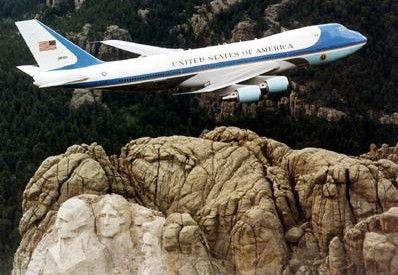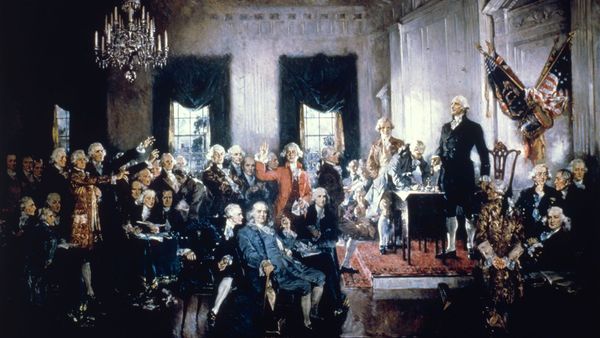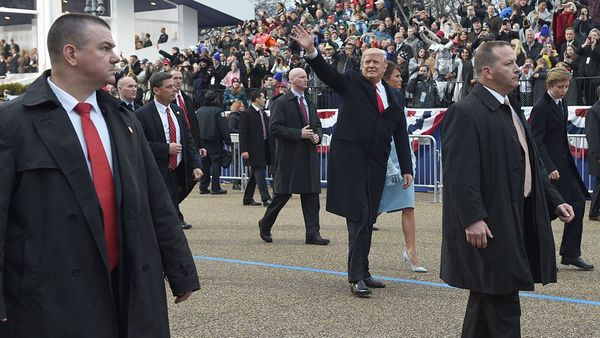McKenzie points out, carefully, that the Secret Service coordinates with state, local and federal authorities in determining the composition of a presidential motorcade. Often, how well-equipped the local force is determines how many vehicles are involved.
"Motorcades are comprised of numerous types of vehicles belonging to the Secret Service and several other entities," McKenzie says. "While precise alignments and numbers cannot be divulged, most motorcades include, at a minimum, a vehicle for the protectee, vehicles for security personnel, and vehicles for local or state law enforcement support."
At the virtual center of a presidential motorcade is the presidential limo, which carries the president, a few Secret Service agents, and other high-ranking dignitaries or family members. In December 1941, shortly after the Japanese bombed Pearl Harbor and the U.S. entered World War II, Franklin D. Roosevelt became the first to use an armor-plated vehicle.
Today's well-armored presidential limo is surrounded by other vehicles in the motorcade, including other decoy limos and many support cars. In a 2016 article, The Drive suggested there may be as many as 20 different limos in the presidential fleet, though we couldn't get McKenzie to confirm this info. When a president visits, the presidential limo and many other cars in the motorcade (however many the Secret Service deems necessary) — including, perhaps, a spare limo — are shipped to the destination via Air Force planes.
The limo carrying the president is preceded in the motorcade by different vehicles closing streets and clearing the way — often, local police on motorcycles do that job — and is closely accompanied by at least one other limo. The two limos move back and forth, swapping places, during the procession, according to The Drive.
While the motorcade is in motion, highly trained Secret Service drivers execute a classic roving 'shell game,' weaving Stagecoach and Spare, or Spares, in and out among each other so that a would-be attacker would have a tough time picking the car actually containing the President. The presidential limousines even have identical plates.
The current presidential limo is known as "The Beast," a Cadillac hybrid that, if it's like previous presidential limos, sports "bullet-proof glass, a supply of the president's blood type and an independent air supply to thwart a chemical attack," according to TechCrunch.
Secret Service details, communications vehicles and other support vehicles (including a lot of heavy-duty SUVs) follow the presidential limo, according to The Drive. The rear of the convoy includes vehicles carrying members of the press, an ambulance and more local police to protect the rear of the motorcade. The Secret Service always is in charge.
"Agents assigned to drive in Presidential motorcades receive extensive training in several areas and they rehearse and research motorcade routes continually," McKenzie says.
Things don't always go smoothly. A few motorcycle officers assigned to the presidential motorcade in Lake Charles, Louisiana, in May 2019 were injured in an accident. Still, that motorcade got its job done, delivering President Donald Trump safely to his destination, even if there were a few traffic tie-ups along the way.



